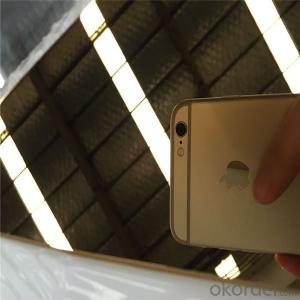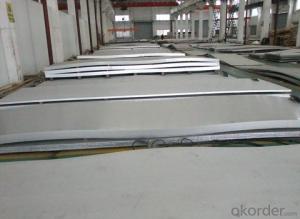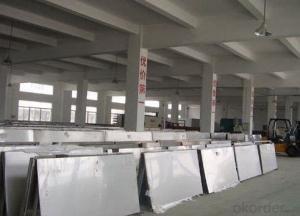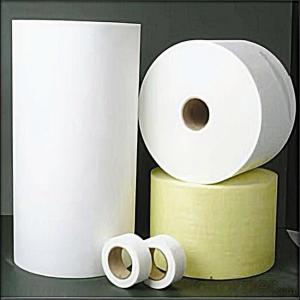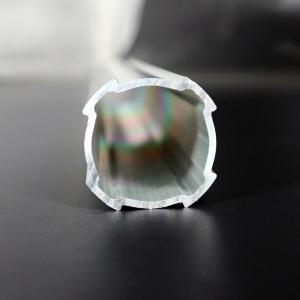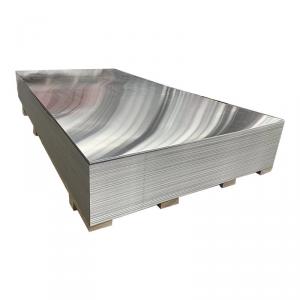Rusty Stainless Steel Sheets - AISI A240 304 Stainless Steel Plate 8K for Elevator Decoration
- Loading Port:
- Shanghai
- Payment Terms:
- TT OR LC
- Min Order Qty:
- 3 m.t.
- Supply Capability:
- 23000 m.t./month
OKorder Service Pledge
OKorder Financial Service
You Might Also Like
Specification
Product Description
roduct Details | |
Product name | Stainless steel plate |
Brand name | RONSCO |
Standard | ASTM A240, ASTM A480, EN10088, JIS G4305 |
Material | 304, 316L, 321, 310S, 1.4301, 1.4307, 1.4404, S31803, S32750, 904L, Monel 400, Inconel 800 |
Surface | NO.1,2B,NO.4,BA,SB,Satin,Brushed,Hairline,Mirror |
Certificate | ISO9001, CE, SGS, TUV, DNV, BV, LR, GL, NK, RMRS |
Packing | In wooden cases,in wooden pallets |
Shipment | By sea, by air, by express |
Specifications |

Finished Products
Stocks of the 201 stainless steel sheet
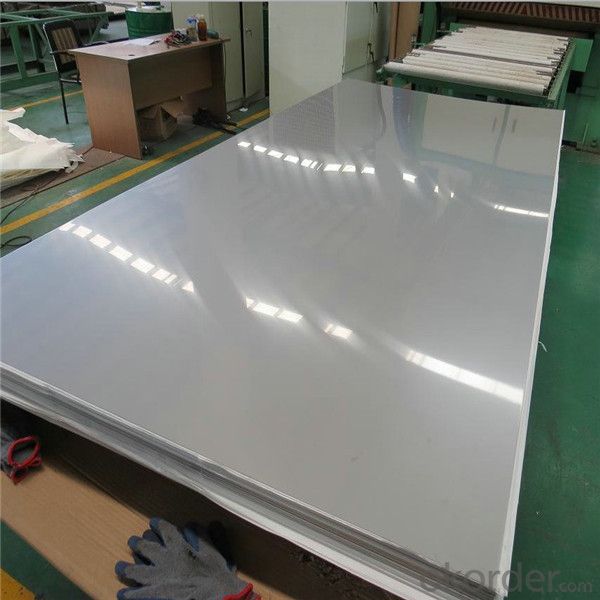
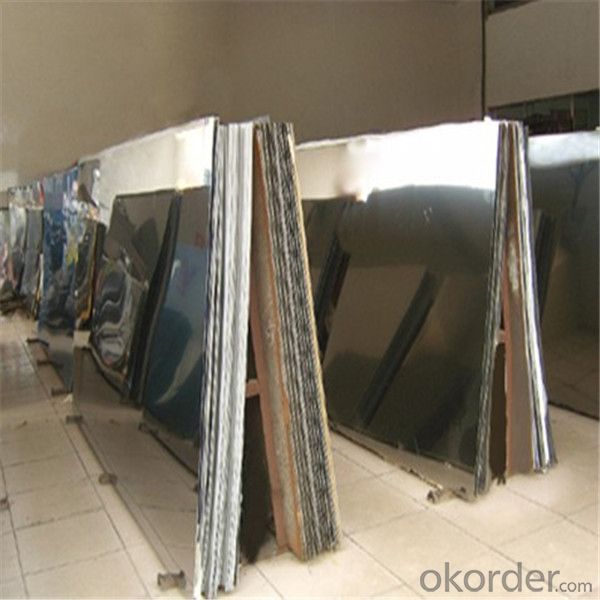
Why choose us?
19 Years specialized in processing,sales and technical services of high quality stainless steel plates and coils.
Our company located in Chariman Mao's hometown- Changsha,Hunan Province,we provide stainless steel plates and coils to our customers all over the world.
One of the biggest agent of Baosteel,TISCO in the South of China.
6 processing platform such as "Shearing,cutting,surface finish,forming,welding and machine platforms".
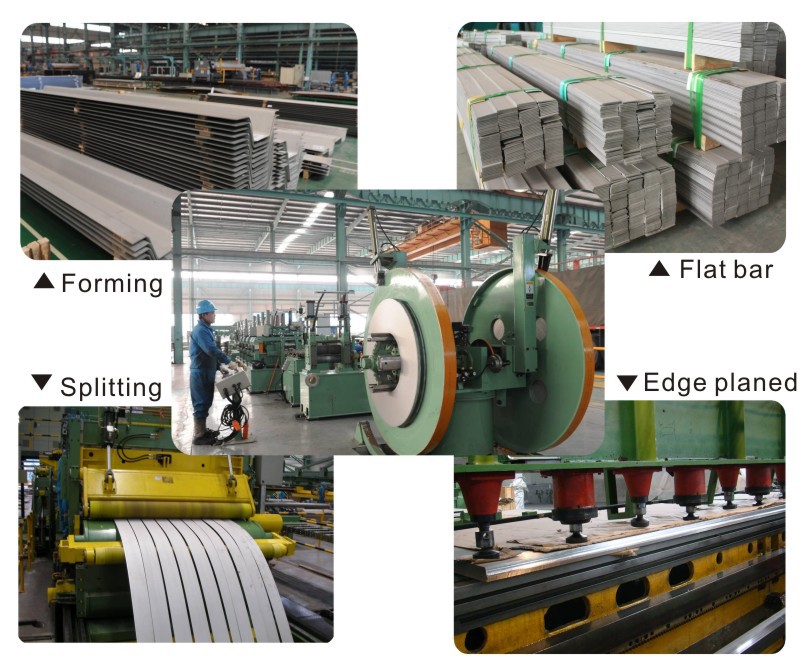
- Q:How do I prevent stress relaxation on stainless steel sheets?
- Stress relaxation is a phenomenon that occurs in stainless steel sheets when they are subjected to prolonged exposure to high temperatures or constant stress. To prevent stress relaxation on stainless steel sheets, you can take the following measures: 1. Proper selection of stainless steel grade: Different grades of stainless steel have varying resistance to stress relaxation. Choose a grade that offers high resistance to this phenomenon, such as austenitic stainless steels like Type 304 or Type 316. 2. Avoid excessive temperatures: Stainless steel sheets should be operated within their recommended temperature limits. Exposing them to temperatures beyond their specified range can accelerate stress relaxation. Ensure that the operating temperature remains within the permissible limits. 3. Control the stress levels: Minimize the stress levels applied to the stainless steel sheets during fabrication and installation. Avoid excessive bending, stretching, or deformation that could introduce stress into the material. Properly design and fabricate the components to reduce stress concentration points. 4. Post-weld heat treatment: If the stainless steel sheets are welded, consider performing a post-weld heat treatment. This process involves subjecting the welded area to controlled heating and cooling cycles to relieve residual stresses and minimize the potential for stress relaxation. 5. Reduce exposure to aggressive environments: Stainless steel sheets are corrosion-resistant, but exposure to aggressive chemicals or environments can accelerate stress relaxation. Avoid prolonged exposure to corrosive substances or environments that may compromise the material's integrity and cause stress relaxation. 6. Regular inspections and maintenance: Periodically inspect the stainless steel sheets for signs of stress relaxation, such as deformation, cracks, or changes in dimensions. Regular maintenance and timely repairs can help identify and address any issues before they worsen. 7. Consult with experts: If you are unsure about the specific requirements to prevent stress relaxation in your stainless steel sheets, consult with metallurgical experts or stainless steel manufacturers. They can provide guidance on the best practices and materials to ensure long-term performance and prevent stress relaxation. By implementing these preventive measures, you can significantly reduce the risk of stress relaxation in stainless steel sheets, ensuring their durability and maintaining their structural integrity over time.
- Q:Can stainless steel sheets be used for sound insulation?
- Yes, stainless steel sheets can be used for sound insulation to some extent. While stainless steel is not the most effective material for soundproofing, it does have some sound-dampening properties due to its density and ability to reflect sound waves. However, for optimal sound insulation, it is recommended to use specialized soundproofing materials designed specifically for this purpose.
- Q:Can stainless steel sheets be used for railway infrastructure?
- Yes, stainless steel sheets can be used for railway infrastructure. Stainless steel is known for its durability, corrosion resistance, and strength, making it suitable for various applications in the railway industry. It can be used for railway tracks, bridges, platforms, and other structures that require high strength and long-lasting performance. Additionally, stainless steel's low maintenance requirements and ability to withstand harsh environmental conditions make it an ideal choice for railway infrastructure.
- Q:How are stainless steel sheets made?
- Stainless steel sheets undergo a process called hot rolling to be produced. This starts by melting iron, nickel, chromium, and other elements in an electric arc furnace. The resulting mixture is then cast into large rectangular blocks known as slabs. The slabs are subjected to high temperatures and passed through a series of hot rolling mills. These mills consist of large rollers that gradually decrease the slab's thickness while increasing its length and width. As the slab goes through each rolling mill, it is constantly squeezed by the rollers, resulting in a thinner and longer sheet. Following the hot rolling process, the stainless steel sheet goes through annealing. This involves heating the sheet to a specific temperature and then allowing it to cool slowly. This process helps release internal stresses and enhance the material's mechanical properties. Next comes pickling, where the sheet is submerged in an acid solution to eliminate any surface impurities and oxides. This improves the appearance and corrosion resistance of the stainless steel. Once the pickling process is done, the sheet undergoes cold rolling. Cold rolling further decreases the sheet's thickness and improves its surface finish. This is done at room temperature, increasing the hardness and strength of the stainless steel. Lastly, the stainless steel sheet undergoes various finishing processes. These may include cutting to size, leveling, surface polishing, and coating to enhance appearance or protect against corrosion. In conclusion, the manufacturing process of stainless steel sheets involves a combination of melting, casting, hot rolling, annealing, pickling, cold rolling, and finishing processes. This ensures that the final product meets the desired specifications in terms of thickness, strength, and surface finish.
- Q:Can stainless steel sheets be used for hygienic environments?
- Stainless steel sheets are indeed suitable for hygienic environments. This is because stainless steel possesses certain inherent properties that render it highly resistant to corrosion, heat, and chemical damage, thus making it a popular choice for such environments. Its surface is smooth and non-porous, which facilitates easy cleaning and prevents the accumulation of bacteria, mold, or other contaminants. Furthermore, stainless steel is non-reactive and does not release any harmful substances, making it ideal for sensitive environments like food processing facilities, hospitals, pharmaceutical labs, and cleanrooms. Moreover, stainless steel is both durable and long-lasting, ensuring excellent hygiene and cleanliness for extended periods. All in all, stainless steel sheets are a dependable and hygienic option for various applications in environments that prioritize cleanliness and sanitation.
- Q:How do you determine the best grade of stainless steel sheet for a specific application?
- To determine the best grade of stainless steel sheet for a specific application, several factors need to be considered. These factors include the intended use and environment, corrosion resistance requirements, strength and durability needed, temperature range, and cost constraints. It is essential to consult with experts or engineers knowledgeable in stainless steel grades and their properties to ensure the selection aligns with the specific application's requirements and offers the best balance between performance and cost.
- Q:What are the applications of stainless steel sheets in the automotive industry?
- Stainless steel sheets in the automotive industry are used for various applications such as body panels, exhaust systems, fuel tanks, and structural components. They provide excellent corrosion resistance, high strength, and durability, making them ideal for withstanding harsh conditions and ensuring long-lasting performance in vehicles. Additionally, stainless steel sheets can be easily formed and welded, allowing for precise shaping and customization according to the specific requirements of different automotive parts.
- Q:Can stainless steel sheets be used for stairs and railings?
- Stairs and railings can indeed utilize stainless steel sheets. This remarkably resilient and adaptable material frequently finds its place in architectural and interior design endeavors. With its corrosion resistance, stainless steel proves suitable for outdoor settings and environments with elevated humidity or chemical exposure. The malleability of stainless steel sheets allows for their fabrication into diverse forms and dimensions, rendering them perfect for crafting stairs and railings with an elegant and contemporary appearance. Furthermore, stainless steel boasts effortless cleanliness and maintenance, thus making it a pragmatic selection for high-traffic areas or public spaces.
- Q:What are the different types of embossed patterns available for stainless steel sheets?
- Stainless steel sheets offer a variety of embossed patterns to choose from. Some of the commonly seen options are as follows: 1. Diamond Pattern: This pattern showcases a series of diamond-shaped raised protrusions on the sheet's surface. It is a popular choice as it adds visual interest and texture to various applications. 2. Linen Pattern: The linen pattern features parallel lines that create a textured appearance resembling linen fabric. Architects and interior designers often utilize this pattern due to its unique aesthetic. 3. Squares Pattern: As the name suggests, this design consists of square-shaped raised protrusions on the stainless steel sheet. It provides a clean and modern look, suitable for a wide range of applications. 4. Leather Pattern: The leather pattern imitates the texture and appearance of leather, adding elegance and sophistication to stainless steel sheets. It is a favored choice for decorative purposes. 5. Moire Pattern: The moire pattern creates a wavy or rippled design, resulting in an optical illusion effect. It adds a dynamic visual element to stainless steel sheets, making them stand out. 6. Checkerplate Pattern: This pattern consists of raised squares or rectangles arranged in a checkered pattern. Its high slip resistance makes it ideal for applications where safety is crucial, such as stairs or ramps. These examples represent only a fraction of the embossed patterns available for stainless steel sheets. The choice of pattern depends on aesthetic preference, functionality, and specific application requirements. Whether for architectural, interior design, or industrial purposes, there is a wide range of embossed patterns to cater to various needs.
- Q:Can stainless steel sheets be polished?
- Yes, stainless steel sheets can be polished. Polishing stainless steel sheets helps to improve their appearance by creating a smooth and shiny surface. The process typically involves using abrasive materials such as sandpaper, polishing compounds, or polishing machines to remove any imperfections or scratches on the surface of the stainless steel sheet. This can be done manually or with the help of specialized equipment. Polishing stainless steel sheets not only enhances their aesthetic appeal but also helps to prevent corrosion and improve their resistance to staining.
1. Manufacturer Overview |
|
|---|---|
| Location | |
| Year Established | |
| Annual Output Value | |
| Main Markets | |
| Company Certifications | |
2. Manufacturer Certificates |
|
|---|---|
| a) Certification Name | |
| Range | |
| Reference | |
| Validity Period | |
3. Manufacturer Capability |
|
|---|---|
| a)Trade Capacity | |
| Nearest Port | |
| Export Percentage | |
| No.of Employees in Trade Department | |
| Language Spoken: | |
| b)Factory Information | |
| Factory Size: | |
| No. of Production Lines | |
| Contract Manufacturing | |
| Product Price Range | |
Send your message to us
Rusty Stainless Steel Sheets - AISI A240 304 Stainless Steel Plate 8K for Elevator Decoration
- Loading Port:
- Shanghai
- Payment Terms:
- TT OR LC
- Min Order Qty:
- 3 m.t.
- Supply Capability:
- 23000 m.t./month
OKorder Service Pledge
OKorder Financial Service
Similar products
New products
Hot products
Hot Searches
Related keywords
